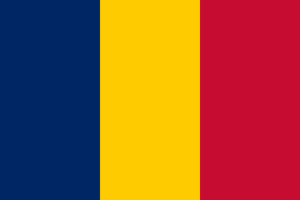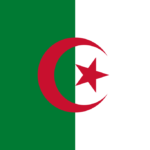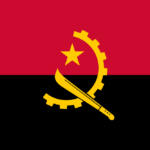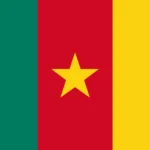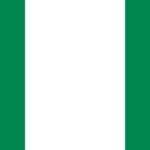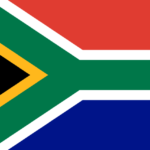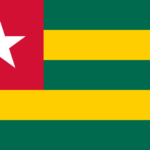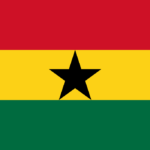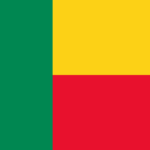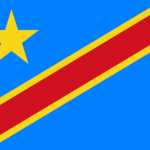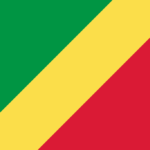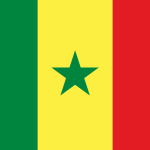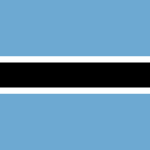Chad

Chad, situated in north-central Africa, is a landlocked country characterized by a gently sloping basin that ascends from the Lake Chad region in the west, surrounded by mountain ranges to the north, east, and south. Natural irrigation is primarily reliant on the Chari and Logone rivers, along with their tributaries, flowing from the southeast into Lake Chad. N’Djamena (formerly Fort-Lamy), the capital, is approximately 1,000 miles (1,600 km) distant from the western African coastal ports.
Despite being the fifth largest country on the continent, Chad, with much of its northern expanse within the Sahara, exhibits a low population density of around 20 persons per square mile (8 persons per square km). The majority of inhabitants engage in agricultural activities; cotton cultivation predominates in the south, while cattle husbandry thrives in the central regions. Since 2003, Chad has become an oil-producing nation, sparking optimism regarding the potential improvement of its economic conditions through the generated revenues.
Demographics
Chad’s population, projected to be between 13,630,252 and 13,679,203 in 2015, with a medium projection of 13,670,084, is predominantly young, with 47% under the age of 15. Urbanization is marked by significant disparities, with about half of the population residing in the southern region. The capital, N’Djaména, is a major urban centre witnessing rapid growth, alongside other towns like Sarh, Moundou, Abéché, and Doba. However, conflicts, such as the influx of Sudanese refugees and internal displacements, pose challenges to social cohesion.
Polygamy is prevalent, and gender disparities persist, with women facing obstacles in education and employment. Ethnic diversity is notable, with over 200 ethnic groups, shaping local social structures. Languages spoken reflect this diversity, with Arabic and French as official languages and over 100 others spoken, including Chadic and Central Sudanic languages.
Religiously, Chad is diverse, with a Muslim majority and significant Christian and animist populations. Islam, predominantly Sunni, exhibits diverse practices, including Sufi orders, while Christianity is mostly Catholic with growing evangelical movements. Indigenous religions also persist, particularly in the south.
Education faces challenges due to limited access, with low attendance rates and high illiteracy, exacerbated by child labour, especially in activities like cattle herding. Despite these challenges, there are efforts to improve educational opportunities, including higher education institutions like the University of N’Djamena.
In essence, Chad’s societal landscape reflects a complex interplay of demographics, cultures, religions, and socio-economic challenges, requiring multifaceted approaches for development and social progress.
History
The land witnessed the rise and fall of empires like Kanem and Bagirmi, thriving due to their control over trans-Saharan trade routes. However, the southern regions remained largely autonomous, setting the stage for future ethnic tensions.
The arrival of the French in 1900 marked the beginning of colonial rule. Focused primarily on extracting resources like cotton, France neglected infrastructure development and social cohesion within the colony. This neglect, coupled with the stark ethnic divide, laid the groundwork for instability following independence in 1960.
The post-colonial era witnessed a series of brutal civil wars. The first (1979-1987) pitted the Muslim north against the south, further complicated by Libyan intervention. Hissène Habré’s subsequent dictatorship (1987-1990) was marred by widespread human rights abuses.
Even after Habré’s overthrow, Chad continued to grapple with internal strife. The discovery of oil in 2003, instead of ushering in prosperity, fueled further conflict. President Idriss Déby, who came to power in 1990, attempted reconciliation efforts and reintroduced multi-party elections. However, his rule was marked by controversial constitutional changes extending his term limit and continued ethnic violence.
Despite these internal struggles, Chad actively participated in the fight against Islamist militants in the region. However, the nation’s future remains uncertain. President Déby’s death in 2021 during a clash with rebels led to his son assuming interim power, raising concerns about a potential return to instability.
Understanding Chad’s intricate history is crucial to comprehending the challenges it faces today. Decades of civil war, ethnic tensions, and a legacy of colonial neglect continue to cast a long shadow. As Chad navigates the path towards a more stable future, addressing these underlying issues remains paramount.
Geography
Chad’s geographical identity extends far beyond its landlocked status and diverse terrain. Let’s delve deeper into the climatic zones, the rise and fall of its landforms, and the vibrant tapestry of life it sustains:
Climate:
- A Dance of Latitudes: Straddling latitudes 7° and 24° North, Chad experiences a dramatic shift in climate zones as you travel north.
- Southern Sanctuary: The southernmost tip enjoys a tropical savanna climate with abundant rainfall reaching up to 1200 mm annually. This allows for the flourishing of lush grasslands and woodlands.
- Sahelian Stretch: Moving north, the climate transitions into the Sahel, a hot and semi-arid zone. N’Djamena, the capital, exemplifies this region with scorching temperatures, a distinct dry season, and sporadic bursts of rain (around 300-600 mm annually).
- Sahara’s Embrace: The vast northern expanse surrenders to the unforgiving grip of the Sahara Desert. Aridity reigns supreme here, with minimal rainfall (less than 200 mm annually) and scorching temperatures exceeding 40°C.
Relief:
- Basin Dominance: The majority of Chad’s terrain forms a vast, low-lying basin. This basin dips gently towards Lake Chad in the west, with an average elevation of around 250 meters.
- Gradual Ascents: The basin isn’t entirely flat. As you move outwards, the landscape transitions into a series of plateaus and highlands. The eastern borders witness the rise of the Ennedi Plateau, reaching over 900 meters, while the central regions boast the Guera Massif, with peaks exceeding 1,500 meters.
- Mountainous Majesty: The northernmost reaches of Chad erupt dramatically. The majestic Tibesti Mountains pierce the sky, with Emi Koussi, the nation’s highest peak, towering over 3,400 meters. This volcanic range adds a unique dimension to the country’s relief, contrasting sharply with the plains below.
Flora:
- Southern Oasis: The well-watered south boasts a rich tapestry of plant life. Lush green savannas dominate the landscape, teeming with tall grasses, acacia trees, and various shrubs.
- Sahelian Adaptation: As rainfall diminishes moving north, the vegetation adapts. The Sahelian zone features thorny acacia trees, drought-resistant grasses, and shrubs.
- Desert Defiance: Plant life in the Sahara is a testament to resilience. Sparse desert vegetation like cacti, succulents, and low-lying shrubs battle the harsh conditions.
Fauna:
- Southern Sanctuary: The southern savannas provide a haven for a diverse range of animals. Large mammals like elephants, lions, giraffes, and antelopes roam freely. Primates like chimpanzees and baboons inhabit the forested areas.
- Sahelian Survivors: The Sahelian zone is home to a variety of adapted fauna. Antelopes, gazelles, and ostriches traverse the arid plains. Reptiles like snakes and lizards thrive in the dry conditions.
- Desert Dwellers: The Sahara, despite its harshness, supports unique creatures. Fennec foxes, sand cats, and vipers have evolved to survive the extreme temperatures and limited water availability.
In conclusion, Chad’s geography presents a fascinating interplay of climatic zones, diverse landforms, and a remarkable array of plant and animal life. From the lush greenery of the south to the stark beauty of the Sahara, each region pulsates with life, showcasing the remarkable power of adaptation and resilience in the face of challenging environments.
Government and politics
In Chad, the fundamental law establishes a potent executive division helmed by a president wielding dominance over the political framework. This president holds authority in appointing the prime minister, and cabinet members, and exerts significant sway in the selection of judges, military leaders, regional officials, and leaders of Chad’s quasi-governmental entities. In instances of severe and immediate peril, the president, after consulting with the National Assembly, retains the prerogative to declare a state of emergency. Directly chosen through popular suffrage, the president serves a five-year tenure; in 2005, constitutional restrictions on term lengths were abolished, thereby permitting a president to extend their tenure beyond the previous two-term constraint. The majority of Déby’s principal advisors hail from the Zaghawa ethnic group, although individuals from southern regions and opposition factions also hold positions within the government.
Chad’s legal framework draws from the principles of French civil law and Chadian customary law, the latter of which is subordinate to public order or constitutional assurances of parity. Despite constitutional assurances of judicial autonomy, the president plays a pivotal role in appointing the most significant judicial figures. The apex institutions within the legal system, namely the Supreme Court and the Constitutional Council, have been fully functional since the year 2000. The Supreme Court comprises a chief justice, nominated by the president, and 15 counsellors, bestowed with lifelong appointments by both the president and the National Assembly. Heading the Constitutional Court are nine judges elected to serve nine-year terms. This institution holds the authority to scrutinize proposed legislation, treaties, and international accords before their ratification.
Legislative authority is vested in the National Assembly, composed of 155 members elected to serve four-year terms, convening thrice annually. Regular sessions are scheduled biannually, commencing in March and October, with provisions for special sessions summoned by the prime minister. Every two years, deputies elect a president for the National Assembly. Within a span of 15 days, the president must either endorse or reject newly enacted statutes. Furthermore, the prime minister’s governmental agenda necessitates approval from the National Assembly, which retains the capacity to compel the resignation of the prime minister via a majority vote of no confidence. However, should the executive branch’s agenda be rebuffed twice within a single year, the president reserves the authority to dissolve the Assembly and call for fresh legislative polls. In practice, the president wields considerable influence over the National Assembly through the Patriotic Salvation Movement (MPS), his political party, which commands a substantial majority.
Before the legalization of opposition parties in 1992, Déby’s MPS monopolized Chad’s political landscape. Since then, 78 registered political entities have emerged. In 2005, opposition factions and human rights organizations advocated for a boycott of the constitutional plebiscite permitting Déby’s candidacy for a third term, citing pervasive irregularities in voter enrollment and governmental censorship of independent media during the campaign. Observers regarded the 2006 presidential elections as a mere ritual, with the opposition denouncing the polls as a charade and opting out of participation.
Chad has been categorized as a failed state by the Fund for Peace (FFP), ranking seventh highest on the Fragile States Index in 2021. Corruption permeates all echelons of society, with Chad placed 164th among 180 nations surveyed in Transparency International’s Corruption Perceptions Index for 2021. Critics of former President Déby have levied accusations of nepotism and tribal favouritism.
In southern Chad, land disputes have escalated in frequency and intensity, often erupting into violent confrontations. Traditional community customs are facing erosion, along with the livelihoods of numerous agriculturalists.
The demise of long-serving President Idriss Déby on April 20, 2021, precipitated the dissolution of both the nation’s National Assembly and government, ushering in a transitional military council comprised of military officials and led by his son, Mahamat Kaka. Currently, the constitution lies in abeyance pending the inauguration of a civilian National Transitional Council tasked with drafting a replacement. The military council has pledged to conduct elections following an 18-month transitional period. According to the 2023 V-Dem Democracy indices, Chad ranks as the 16th lowest electoral democracy globally and the fourth lowest in Africa.
Internal dissent and foreign relations
Déby contended with armed opposition factions fragmented by leadership disputes but united in their resolve to topple his regime. These factions launched an assault on the capital on April 13, 2006, though their efforts were ultimately thwarted. France holds considerable sway in Chad’s foreign affairs, maintaining a deployment of 1,000 troops within the country. Déby relied on French assistance to repel insurgent forces, with France providing logistical and intelligence backing to Chad’s military to prevent regional instability. Nonetheless, Franco-Chadian relations were strained by the allocation of oil exploration rights to the American firm Exxon in 1999.
Over the past few decades, Chad has witnessed the emergence of numerous rebel factions. In 2007, a peace accord was brokered, integrating soldiers from the United Front for Democratic Change into the Chadian Armed Forces. The Movement for Justice and Democracy in Chad clashed with government troops in 2003 in an attempt to overthrow President Idriss Déby. Additionally, conflicts have erupted with Khartoum’s Janjaweed rebels in eastern Chad, utilizing helicopter gunships to target civilians. Presently, the Union of Resistance Forces (UFR) remains engaged in hostilities with the Chadian government, boasting an estimated force of 6,000 combatants and 300 vehicles in 2010.
Foreign aid from the UAE was inaugurated in the Chadian city of Amdjarass on August 3, 2023. The UAE continues to assist the Chadian populace and supports initiatives to deliver humanitarian aid through its humanitarian agencies to Sudanese refugees residing in Chad.
Military Affairs
As of 2006, the CIA World Factbook estimates Chad’s military expenditure to account for 4.2% of its GDP. Based on the country’s GDP at the time ($7.095 billion), military spending was approximated at around $300 million. However, this estimate diminished following the cessation of the Civil war in Chad (2005–2010), with the World Bank projecting military expenditure to stand at 2.0% of GDP in 2011.
Administrative divisions
Since 2012, Chad has been partitioned into 23 regions. This restructuring occurred in 2003 as part of a decentralization initiative, which saw the abolition of the previous 14 prefectures. Each region is overseen by a governor appointed by the president. Prefects administer the 61 departments within the regions, which are further subdivided into 200 sub-prefectures, comprising 446 cantons.
The cantonal system is slated for replacement by rural communities; however, the requisite legal and regulatory framework remains pending completion. The constitution mandates decentralized governance to foster community involvement in local development efforts. Although stipulations exist for elected local assemblies to govern each administrative subdivision, no local elections have been conducted, with communal elections scheduled for 2005 repeatedly deferred.
Economy
Chad, nestled within the United Nations Human Development Index, finds itself positioned as the seventh most destitute nation globally, with a staggering 80% of its populace entrenched below the poverty threshold. In the fiscal realm, Chad boasts a GDP per capita estimated at US$1,651, dating back to 2009. Politically, Chad aligns itself with the Bank of Central African States, the Customs and Economic Union of Central Africa (UDEAC), and the Organization for the Harmonization of Business Law in Africa (OHADA).
The fiscal domain of Chad revolves around the CFA franc. Historically, during the 1960s, Chad’s mining sector yielded sodium carbonate, commonly known as natron. Additionally, there have been documented occurrences of gold-laden quartz within the confines of the Biltine Prefecture. Nevertheless, the turbulent waves of civil discord have deterred foreign capital; those who exited Chad between 1979 and 1982 have only recently begun to entertain the prospect of reinvestment within the nation’s economic landscape. The dawn of the new millennium witnessed a surge in direct foreign investment, primarily targeting the burgeoning oil sector, thus propelling Chad towards newfound economic horizons.
The asymmetrical integration into the global economic tapestry, predominantly as a locus for colonial resource extraction, coupled with the inherent deficiencies within the global economic architecture in fostering indigenous industrialization, has entrenched the majority of Chadians in a perpetual state of precarity and malnutrition. A staggering 80% of Chad’s populace relies on subsistence agriculture and animal husbandry for sustenance. Agricultural practices and pastoral movements are intricately intertwined with the prevailing climatic conditions. The southernmost fringes of Chad boast fertile arable lands, yielding bountiful harvests of sorghum and millet. Conversely, the Sahelian belt sustains a modest yield of hardier millet varieties, albeit at significantly reduced output compared to its southern counterparts. The Sahel region, however, serves as an ideal grazing ground for extensive herds of commercial livestock, including cattle, goats, sheep, donkeys, and horses. The arid expanse of the Sahara, punctuated by sporadic oases, supports meagre cultivations of dates and leguminous crops. Urban centres across Chad grapple with acute deficiencies in municipal infrastructure, with a mere 48% of urban denizens having access to potable water and a paltry 2% availing of basic sanitation facilities.
Prior to the ascension of the oil industry, Chad’s economic landscape was dominated by cotton cultivation, contributing to approximately 80% of export revenues. Despite the lack of precise statistical data, cotton continues to hold sway as a primary export commodity. Efforts to revitalize Cotontchad, a leading cotton enterprise beset by the vagaries of global cotton prices, have garnered financial support from France, the Netherlands, the European Union, and the International Bank for Reconstruction and Development (IBRD). Privatization looms on the horizon for this state-owned entity. Beyond cotton, cattle husbandry and gum arabic trade form the bedrock of Chad’s economic fabric.
The United Nations has decried Chad’s plight as a humanitarian crisis since at least 2001. As of 2008, Chad plays host to over 280,000 refugees from Sudan’s Darfur region, alongside an additional 55,000 refugees from the Central African Republic, along with over 170,000 internally displaced persons. In the aftermath of the Battle of N’Djamena in February 2008, UN Under-Secretary-General for Humanitarian Affairs John Holmes sounded the clarion call of “extreme concern,” warning of the deleterious ramifications on humanitarian aid delivery, a lifeline for half a million vulnerable individuals. UN spokesperson Maurizio Giuliano, in conversation with The Washington Post, underscored the perils of inadequate aid provision, cautioning that the humanitarian crisis could potentially metamorphose into an unmitigated catastrophe. Concurrently, humanitarian organizations such as Save the Children have suspended operations in response to the targeted killings of aid workers.
While Chad has made modest strides in poverty alleviation, the national poverty rate witnessed a marginal decline from 55% to 47% between 2003 and 2011. However, the absolute number of impoverished individuals surged from 4.7 million in 2011 to 6.5 million in 2019. By 2018, a staggering 4.2 out of every 10 Chadians found themselves ensnared below the poverty line.
In terms of infrastructure, Chad grapples with a paucity of robust transportation networks. Civil strife has severely impeded the development of transportation infrastructure, with a mere 30 kilometres of paved roads in 1987 ballooning to 550 kilometres by 2004, owing to successive rehabilitation initiatives. Despite these efforts, the road network remains constrained, often rendered impassable for extended durations annually. Devoid of indigenous railways, Chad relies heavily on Cameroon’s rail network for the transit of exports and imports to and from the port of Douala.
As of 2013, Chad boasts an estimated 59 airports, albeit with only 9 featuring paved runways. The capital hosts an international airport, facilitating regular nonstop flights to Paris and various African metropolises.
Energy provision in Chad remains marred by years of mismanagement at the hands of the state-owned Chad Water and Electric Society (STEE), servicing a mere 15% of the capital’s populace and a meagre 1.5% of the national populace. The predominant energy sources for Chadians comprise biomass fuels, including wood and animal dung.
ExxonMobil spearheads a consortium, flanked by Chevron and Petronas, investing a staggering $3.7 billion in the exploitation of oil reserves, estimated at one billion barrels, situated in southern Chad. The onset of oil production in 2003, facilitated by a pipeline, bankrolled in part by the World Bank, linking southern oilfields to terminals along Cameroon’s Atlantic coastline, heralded a new chapter in Chad’s economic trajectory. As a stipulation of financial assistance, the World Bank mandated that 80% of oil revenues be earmarked for development initiatives. In a contentious move, the Chadian government enacted legislation in January 2006, reducing the allocation, prompting the World Bank to suspend its loan program. However, a memorandum of understanding inked between the World Bank and Chad on 14 July 2006 stipulated that 70% of expenditure be channelled towards poverty alleviation endeavours.
Telecommunications infrastructure in Chad remains rudimentary and exorbitantly priced, with fixed-line services monopolized by state-run SotelTchad. As of 2000, Chad boasted a meagre 14 fixed-line connections per 10,000 inhabitants, among the lowest globally.
Gateway Communications, a pan-African telecommunications conglomerate, maintains a presence in Chad. In September 2013, Chad’s Ministry for Posts and Information & Communication Technologies (PNTIC) divulged plans to seek partnerships for the deployment of fibre optic technology.
Chad languishes at the nadir of the World Economic Forum’s Network Readiness Index (NRI), a barometer for assessing a nation’s readiness to embrace information and communication technologies. The 2014 NRI ranking positioned Chad
Cities
National Anthem
La Tchadienne: National Anthem of Chad
Check Voyage info and Guide for Chad Here Check the weather in Chad Here “The Chadian Ballad,” referred to as “La Tchadienne” in French, stands as the anthem of Chad, symbolizing the nation’s identity. Crafted by Louis Gidrol, a Jesuit…
